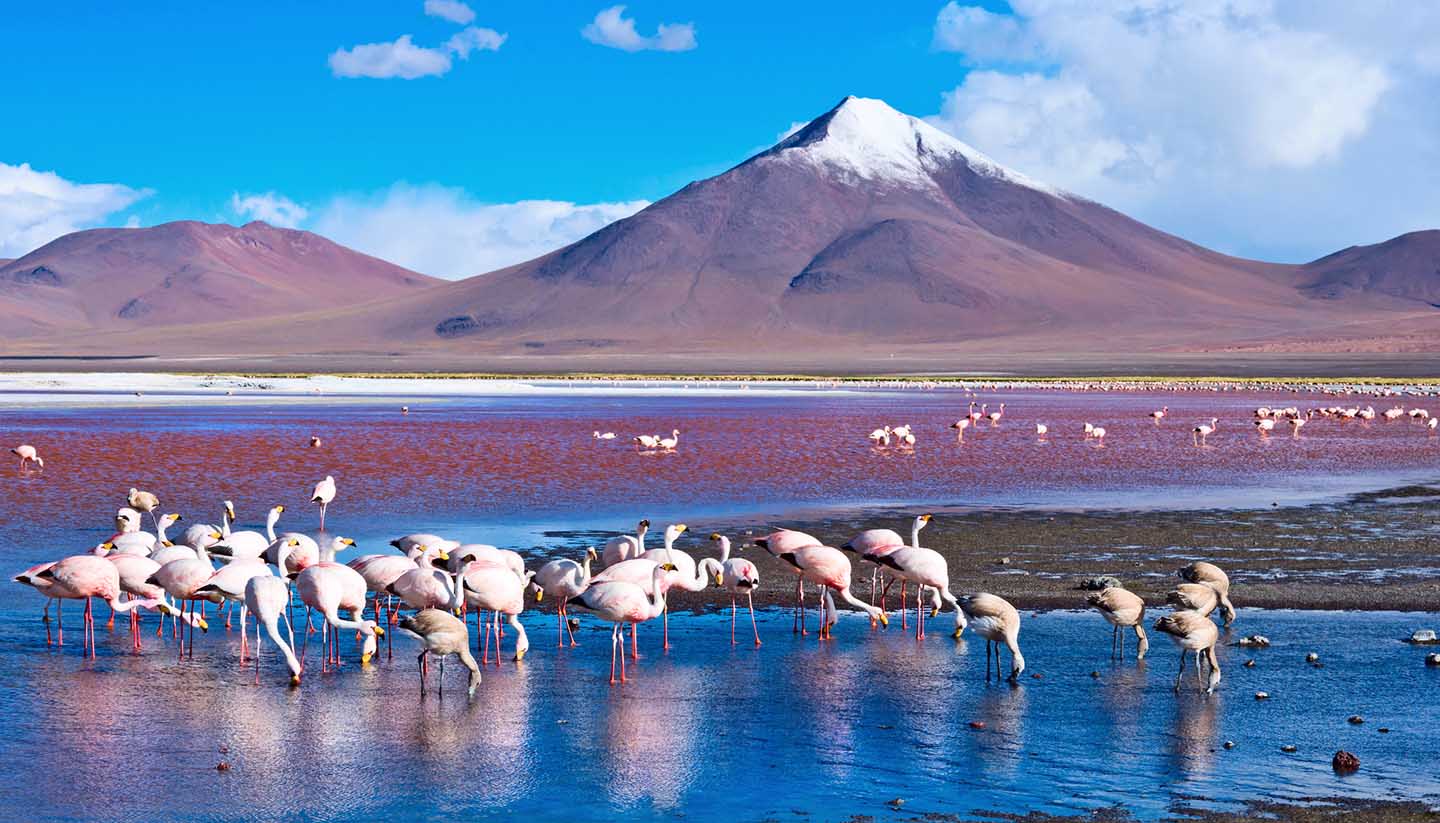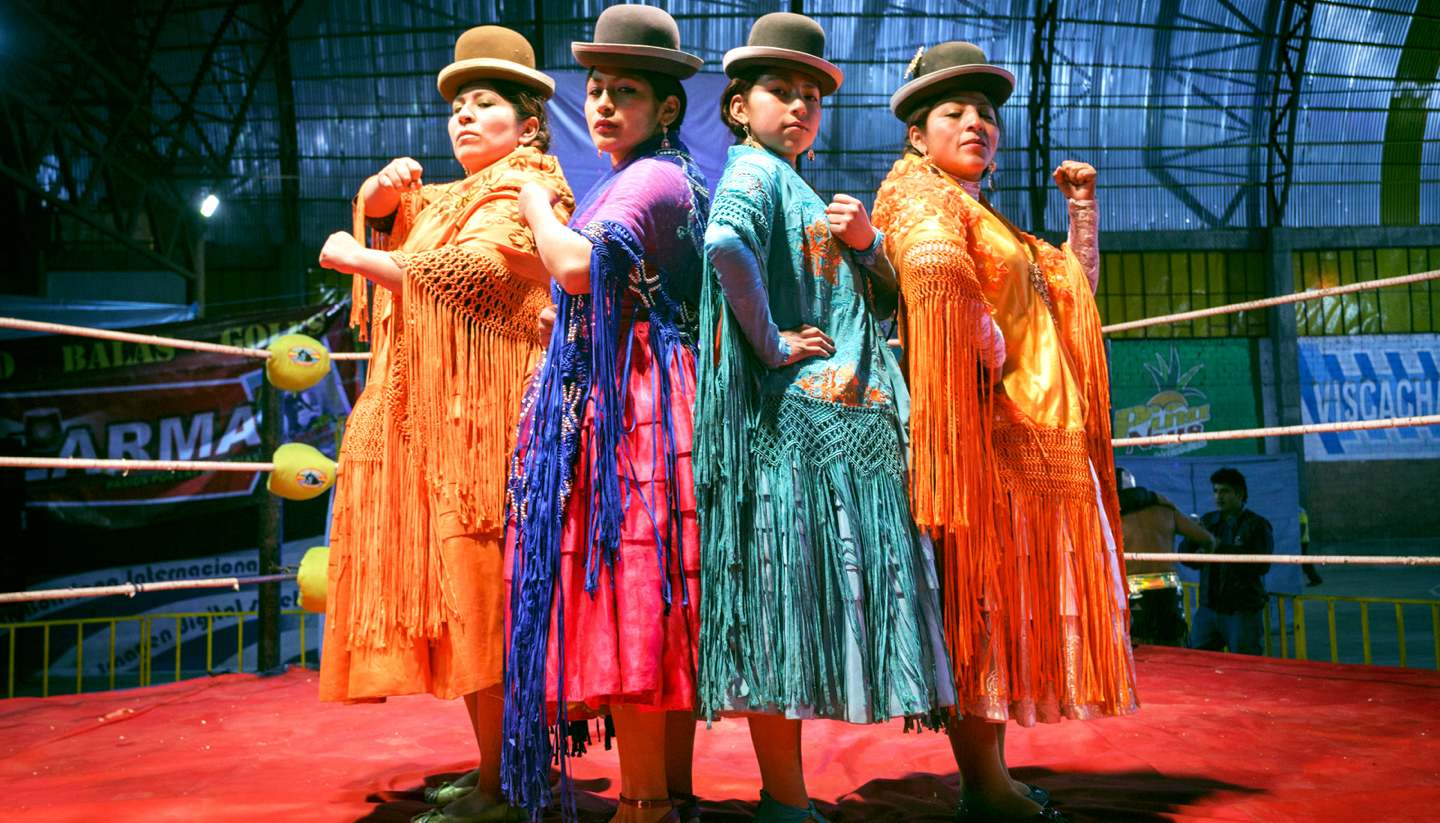Getting Around Bolivia
Air
Internal flights are operated by Boliviana de Aviación (www.boa.bo). Flights to the Amazon are largely operated by Amaszonas (www.amaszonas.com) from La Paz, Cochabamba and Santa Cruz. Because of the country's topography and tropical regions, air travel is the fastest, but not cheapest method of transport, although delays, cancellations and unreliability are common.
La Paz (El Alto), which is the highest airport in the world, and Santa Cruz (Viru Viru) are the principal domestic air hubs. You should book busier routes a few days in advance, and it is important to reconfirm the day before departure.
Departure tax
Around Bs15, payable in Bolivianos.
Road
Bolivia’s size, geography and lack of basic infrastructure means that travel by road can often be a tumultuous, long and scary ride, yet it is still the first choice mode of transport for travellers and Bolivians alike.
Side of the road
RightRoad Quality
Most major roads are paved but in bad condition. Vehicles often have to take unpaved, dirt tracks.
Road Classification
There are main highways entering and exiting major cities like Santa Cruz and La Paz. B roads are unpaved but widely used.
Car Hire
Few travellers rent cars. Virtually no international car hire services are available, but there are local companies in all the major cities.
Taxi
Taxis can usually be found anywhere and at anytime in Bolivia, and are the safest mode of transport. Many people work as part-time taxi drivers in cities to supplement their income. Fares tend to be fixed, rarely over Bs15. Tipping is not necessary. In the lowlands moto-taxis are commonly used, while micros (small minibuses) are the main form of urban transport in big cities.
Bike
Biking is rare in Bolivia. For proper touring you need to bring a bike suitable for mountainous terrain. The country is home to some of the world’s best downhill mountain tracks, notably 'Death Road' outside La Paz.
Regulations
The national speed limit is 80kph (50mph). The use of seat belts is not enforced, nor is the use of mobile phones prohibited. Vehicles drive on the right-hand side, though this rule is overlooked on some mountain roads when turning – the vehicle going uphill has priority.
Breakdown services
Breakdown and petrol services on Bolivia’s roads are scarce. Fill your tank whenever possible.
Documentation
An International Driving Permit is required.
Urban travel
Taxis are generally the safest mode of transport in Bolivian towns and cities. They are cheap and available anytime. In some cities, fixed-route minibuses, otherwise known as colectivos or trufis are commonly used: there’s usually somebody shouting out the route through a window. In rural areas, catching a truck is a cheap but rough form of transport, and moto-taxis are common in the lowlands.
Rail
Bolivia has two separate and unconnected networks - Eastern and Western. The Eastern network's hub is Santa Cruz, from where Ferroviaria Oriental (www.fo.com.bo) runs trains to the Brazilian borders. The Western line, running from Oruro via Uyuni and Tupiza to Villazón (where you can connect to trains to Argentina) is run by Ferroviaria Andina (www.fca.com.bo).
Trains have three to four classes and restaurant cars. Buy tickets in advance from the offices in Santa Cruz and La Paz respectively. There’s also a slow but scenic route between Sucre and Potosí.
Water
Double-decker passenger boats operate between the various small islands on Lake Titicaca with regular departures from Copacabana to the Isla del Sol. Motorised canoes traverse the many rivers of the Amazon basin with the most regular departures from Rurrenabaque.



